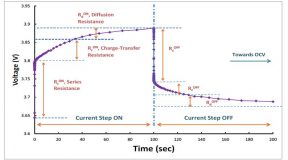Gregory Ratcliff, Director of Life Cycle Management Services
Emerson Network Power, Liebert Services
Batteries may be the most “low-tech” components supporting today’s mission critical data centers, but battery-related failures account for more than one-third of all UPS system failures over the life of the equipment. Since the continuity of critical systems during a power outage typically is dependent on a data center’s power equipment, comprised of UPS and their respective battery backups, it could be argued that batteries are one of the most important components of the data center.
With batteries, a single bad cell can cripple a data center’s entire backup system, particularly if adequate UPS redundancy has not been implemented. And while the vast majority of power outages last less than 10 seconds, the result can be many minutes or hours of costly downtime.
According to the results of the Ponemon Institute’s “2013 Study of Data Center Outages,” the cost of an unplanned data center outage is slightly more than $7,900 per minute. This is a 41 percent increase from the $5,600 a minute reported in 2010. The findings suggest that companies do not have practices and investments in place to reduce or respond to some of the most preventable outages such as a battery failure.
All batteries have a limited life expectancy, dictated by the frequency of battery discharge and recharge. However, there are a number of factors that can impact the aging process and shorten a battery’s useful life including high ambient temperatures, frequent discharge cycles, overcharging, loose connections and strained battery terminals.
To safeguard backup power systems against unplanned or premature battery failures, IT managers should take steps to ensure battery maintenance best practices are observed. These steps include following standards outlined by the Institute of Electrical and Electronics Engineers (IEEE) and manufacturer schedules to ensure batteries are properly installed, serviced and/or replaced before they pose a risk for mission-critical applications.
Battery resistance testing is also an important consideration that can help IT managers avoid unplanned downtime. According to a recent Emerson Network Power white paper, data centers with battery management systems installed on site have a reduced rate of outages due to bad batteries. One popular option is stationary battery management systems with remote professional analyst services, preferably having remote monitoring technology embedded into power protection infrastructures. This technology has the capability of comprehensive data collection in order to provide early warning of alarm or out-of-tolerance conditions. Having embedded, remote monitoring also gives data center managers the ability to directly impact two key measures of availability: Mean Time Between Failures (MTBF) and Mean Time To Repair (MTTR).
Improving MTTR is possible with the right remote monitoring technology because continuous connectivity allows infrastructure experts working from a knowledge base to deliver the highest level of support. They are able to continually collect and analyze data from key parameters, turning information into an actionable plan. This remote diagnosis allows service technicians to be more informed and armed with the correct parts needed to fix a problem before they are dispatched to a customer’s site. This process can save a facility manager critical hours of expensive downtime. For example, with remote UPS and battery monitoring, the time needed to restore a UPS to operation is much less than with a sequential, time-based approach in which the simple awareness of an event can exceed eight hours.
Having the ability to detect potential problems early and rapidly respond to defects or degradation maximizes the reliability of UPS battery systems and gives IT managers the adaptability needed in today’s dynamic data centers.
In the “2013 Study of Data Center Outages,” 71 percent of respondents agree their company’s business model is dependent upon the data center to generate revenue and conduct e-commerce. IT managers need to understand that without properly operating batteries, no UPS system can do its job of providing business continuity. The often perceived “low tech” components supporting mission critical data centers can very quickly create expensive unplanned outages that have a direct impact on a business’ success.










